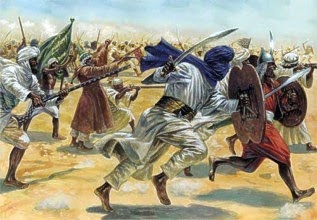Writing the history of Sindh by mubarak ALI
There are two important elements for writing the history of any land: the availability of basic sources, and the presence of professional and trained historians. The modern historiography of Sindh was introduced during the British rule when the Historical Society of Sindh was founded with the purpose of reconstructing the history of Sindh. The Society held regular meetings where the members presented research papers on different aspects of history, as well as published a historical journal which contained well-researched papers, thus contributing immensely to recording the history of Sindh. Sadly, the Society and the journal discontinued after Partition.
However, in its early period, the Sindhi Adabi Board published some material originally available in Persian, after careful editing of the manuscripts. In this respect the Board’s efforts are commendable. The Board had planned to publish the history of Sindh in nine volumes. However, the goal could not be accomplished and only four volumes were published. The first two volumes deal with the pre-historic period covering the Indus Valley civilisation and are written by H.T. Lambrick. The material in these volumes is not up-to-date and needs to be re-written based on newly discovered information.
The history of the Kalhoras was written by Maulana Ghulam Rasool Mehar, but he was not a professional historian and had no training in analysing the events. Hence, his work is merely a chronology of events and simple description of Persian sources in Urdu. Mumtaz Pathan’s work about the Arab rule in Sindh is based on Arab sources but it also lacks critical examination. His other volume on the history of Talpurs is well written, though with some shortcomings as he was not well-acquainted with modern historical trends.
The original plan of the Adabi Board suffered from the drawback that it was based on traditional historiography, i.e. narratives of dynastic history. The modern historiography has changed the approach of writing history ‘from above’; it requires emphasis on the contribution of common people in shaping history ‘from below’. Therefore, there is a need to change the whole approach to writing the history of Sindh and to train young historian to analyse, examine and assess history.
History is not just about dynasties; modern historiography requires emphasis on the contribution of common people in shaping history from below
The Sindh Archives Department is making efforts to collect documents from the revenue department, judiciary, police, CID and jails. It has already collected important documents which could be used to write the history of the daily life of common people, trade and commerce, domestic conflicts and the condition of women. Another important source of material are the accounts of foreign travellers who visited Sindh from the 16th century to the colonial period. These travellers recorded their observations regarding the social, cultural and economic conditions of common people. As their observations contained their biases, it is important to examine them critically before accepting them as truth. I have compiled the social and cultural history of Sindh based on the travellers’ accounts, which could be used as a base for further research.
The archival documents are important source of writing social history. For example, the proceedings of the trial of Rahim Hangoro, a dacoit who was tried in Hyderabad Jail, were fully documented. It is quite interesting to see how a simple peasant became a bandit who looted and killed rich people. His story helps one to understand the roots of banditry in a feudal society. When peasants were being oppressed, tortured and harassed by the powerful landed aristocracy, but found no justice, the last resort for them was to become bandits to take revenge from their persecutors. If the record of Rahim Hangoro’s case has not disappeared, I wish that some historian uses it to write about what led him to his final fate (to be hanged as a criminal). It is ironic that the individuals and circumstances, which made him turn to crimes, were not punished and instead retained their high social status. History has failed to expose their crimes and try them as criminals.
The first condition of availability of material is there but the problem is how to find professional historians. Sadly, the history departments of universities of Sindh have failed to train and produce professional historians who could use material from medieval and modern periods to write a peoples’ history. For using Persian sources of the medieval period, knowledge of Persian is a must, while professional skill is required to analyse archival material.
After its conquest in 1843 Sindh became a part of the Bombay presidency; therefore, archival material regarding the administration of Sindh is in the Bombay archives. This material should be obtained from the Indian government. The imperial archives of the colonial period should also be checked for any records available on Sindh. However, to get the material from these sources, a professional and skillful historian/archivist is required. A comprehensive history of Sindh can only be written once all this material is collected.
sources:
- Published in Dawn, Sunday Magazine, November 23rd, 2014
- Sir nofil for reading concerned article on sindhi language last night




Comments
Post a Comment